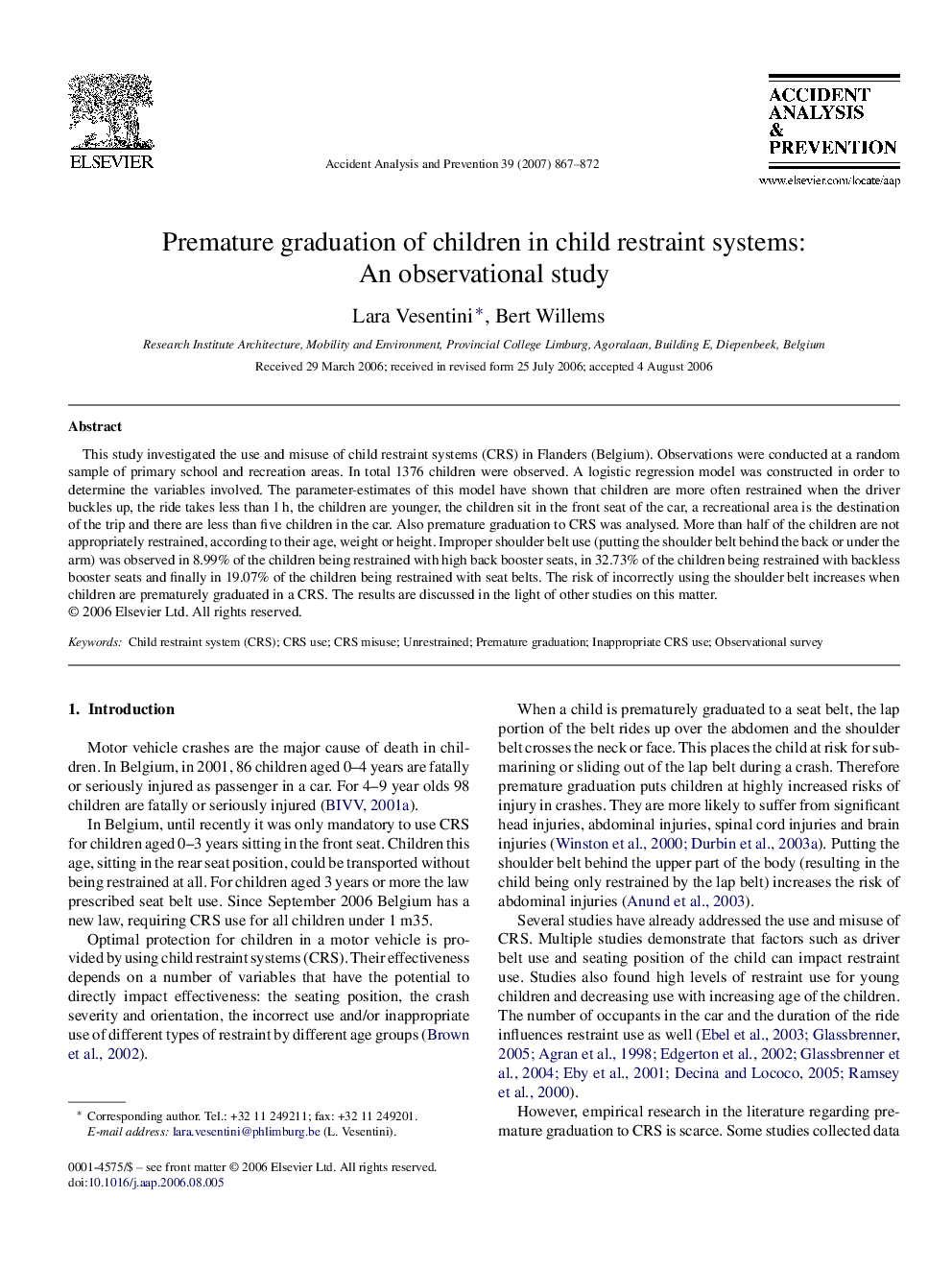| Article ID | Journal | Published Year | Pages | File Type |
|---|---|---|---|---|
| 573715 | Accident Analysis & Prevention | 2007 | 6 Pages |
This study investigated the use and misuse of child restraint systems (CRS) in Flanders (Belgium). Observations were conducted at a random sample of primary school and recreation areas. In total 1376 children were observed. A logistic regression model was constructed in order to determine the variables involved. The parameter-estimates of this model have shown that children are more often restrained when the driver buckles up, the ride takes less than 1 h, the children are younger, the children sit in the front seat of the car, a recreational area is the destination of the trip and there are less than five children in the car. Also premature graduation to CRS was analysed. More than half of the children are not appropriately restrained, according to their age, weight or height. Improper shoulder belt use (putting the shoulder belt behind the back or under the arm) was observed in 8.99% of the children being restrained with high back booster seats, in 32.73% of the children being restrained with backless booster seats and finally in 19.07% of the children being restrained with seat belts. The risk of incorrectly using the shoulder belt increases when children are prematurely graduated in a CRS. The results are discussed in the light of other studies on this matter.
